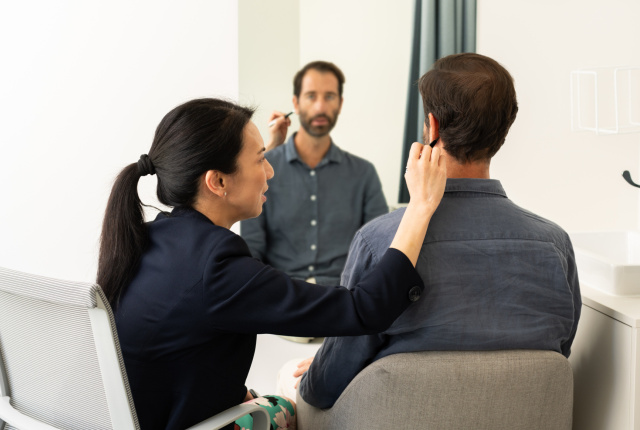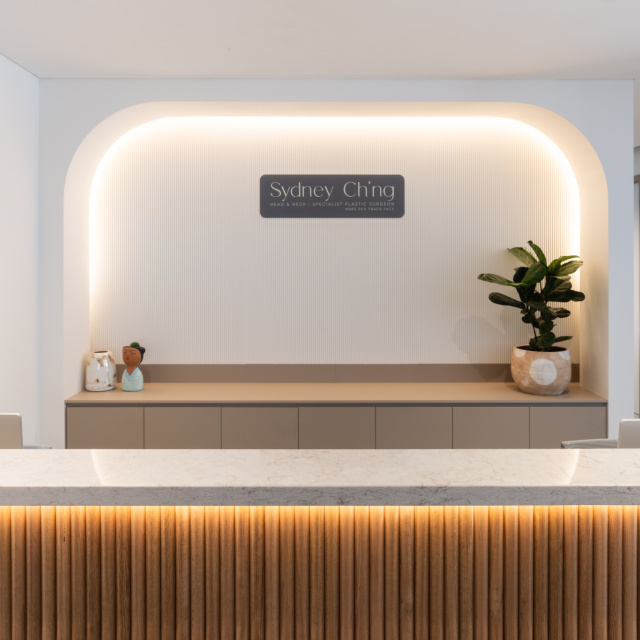Eyelid Surgery (Blepharoplasty) Sydney
Blepharoplasty, or Eyelid Surgery, is a cosmetic surgery procedure to remove excess skin and tighten the soft tissue around the eyelids. Blepharoplasty is an effective way to address the drooping and sagging skin around the eyelid caused by a loss of elasticity and sun damage.

What does blepharoplasty involve?
Blepharoplasty usually involves removing excess skin, tightening the muscle of the eyelid, and redistributing fat around the eye. It can correct droopy upper eyelids and puffy bags below the eye. The surgical incisions are placed such that they are hidden within natural skin creases so that they heal beautifully, and ultimately become imperceptible. Blepharoplasty can be combined with face lift and brow lift for a complete facial rejuvenation, and canthopexy to elevate the outer corner of the eye.
There are two main types of blepharoplasty surgery that may be applied:
Upper Eyelid Blepharoplasty focuses on removing excess skin, fat, or muscle from the upper eyelids. Upper blepharoplasty is applied to address drooping or sagging of the eyelids, which might affect vision or contribute to a tired appearance. This procedure can also be used to create a double eyelid appearance by creating a crease in the upper eyelid.
Lower Eyelid Blepharoplasty involves removing or repositioning excess skin and fat from the lower eyelids to reduce puffy appearance or dark circles. Lower blepharoplasty is mainly targeted at improving the overall appearance of the lower eye area.
Eyelid Surgery with Dr Sydney Ch’ng
Dr Sydney Ch’ng is a fully qualified plastic, reconstructive and cosmetic surgeon and a prominent figure in the surgical research space. Dr Ch’ng has completed a prestigious fellowship in Adult Craniomaxillofacial Surgery at the internationally recognised Chang Gung Memorial Hospital, where she worked with global leaders in facial trauma and cosmetic surgery. With a strong foundation in head and neck surgery and a Fellowship from the Royal Australasian College of Surgeons (FRACS), Dr Ch’ng brings an exceptional level of precision and aesthetic understanding to eyelid surgery procedures in Sydney.
Dr Ch’ng’s evidence-based and patient-focused care ensures optimal clinical, cosmetic and functional outcomes for her patients. For Blepharoplasty procedures in Sydney, Dr Ch’ng follows AHPRA requirements that include a minimum of 2 consultations, observation of a cooling-off period before offering surgery, and screening for dysmorphic body disorder.
What to expect following blepharoplasty
Blepharoplasty is generally considered a minimally invasive surgical procedure due to the small size of incisions that will need to be made along the natural folds of the eyelids. Surgical incisions are placed such that they are hidden within natural skin creases so that they heal beautifully, and ultimately become imperceptible.
As an eyelid surgery specialist in Sydney, Dr Sydney Ch’ng offers blepharoplasty for patients looking to transform their eyelid appearance or address a vision-related issue caused by excess eyelid skin.
Individuals who undergo blepharoplasty will be advised to use an ice pack on the eyes for five days following the completion of the procedure to reduce swelling. Some patients may experience temporary dry eyes that require the application of eye drops for the first four weeks.
Sutures from the eyelid will require removal around five to seven days following surgery. Individuals will be advised to refrain from vigorous activities for at least two to four weeks depending on the extent of surgery.
Results from eyelid surgery can vary depending on the specific procedure performed. However, most patients will notice significant improvements in their eyelid function and appearance during the weeks following recovery.
When to consider blepharoplasty in Sydney
Eyelid surgery can is generally considered for:
Drooping Eyelids - Upper eyelids that frequently sag or droop can create a tired or aged appearance.
Puffiness Under Eyes - Excess fat deposits in the lower eyelids can cause puffiness or bags under the eyes, which can make a person look fatigued or older.
Dark Eye Circles - Blepharoplasty may be able to improve the appearance of dark circles by removing or repositioning fat around the eyes.
Wrinkles and Fine Lines - Excess skin on the eyelids can contribute to wrinkles and fine lines around the eyes. The procedure can smooth out these lines by removing redundant skin.
Other functional and medical reasons for blepharoplasty include:
Poor Eyeglasses Fit - Excess skin or drooping that interferes with the proper fit of eyeglasses or contact lenses can be removed with eyelid surgery.
Obstruction of Vision – Excess eyelid skin may sometimes block certain parts of an individual’s vision. Blepharoplasty can help to restore the natural range of vision.
Get in touch
If you’d like to know more about our head and neck, plastic or skin cancer surgical services, or if you have a question for Dr Ch’ng, we’d love to hear from you.
